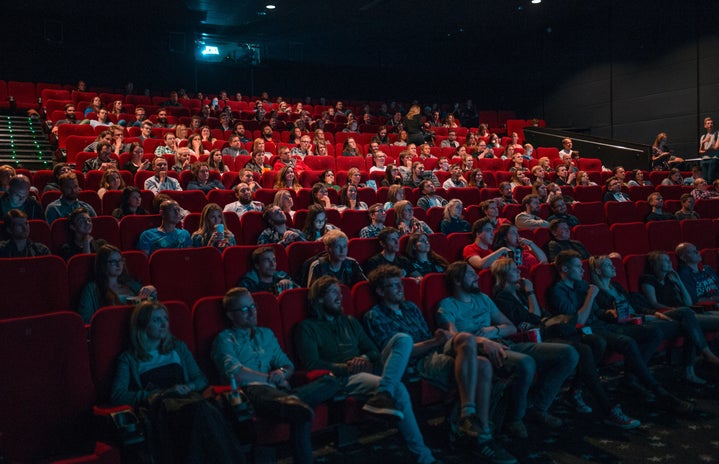It has been 17 years since a washed-up American actor turned whisky spokesman and a young woman in a pink wig sang karaoke and roamed the bright streets of Tokyo, Japan together.
Lost in Translation was released in 2003, a year that brought box office hits such as Kill Bill, Something’s Gotta Give, and Mystic River, but somehow, the film, often touted as a motif of silence, has received loud and sustained approval amongst commercial audiences and cinephiles by and large.
It even garnered Sofia Coppola, the film’s writer and director, the Oscar for Best Original Screenplay as well as nominations for Best Picture and Best Actor for Bill Murray.
Just as the film, Titanic left fans tortured over whether Jack could have fit on the door, Lost in Translation’s legacy is also rife with mystery. I Googled “What did Bob whisper to Charlotte,” and got over 7 million results. Evidently, I’m not the only one who has been tortured by the blistering final scene.
And it is this blistering experience of a movie that perhaps keeps movie-goers so drawn to the film and allows Lost in Translation to stand the test of time as a quiet masterpiece about loneliness and friendship.
The film stars Bill Murray as Bob Harris, an American actor who is visiting Japan as a spokesperson for Suntory whiskey, as his acting career has exhausted. While staying at the Park Hyatt Tokyo, Bob meets Charlotte, a fellow American and recent Yale graduate who is accompanying her husband on a photography job. Though she is bright, and supposedly in love with her husband, Charlotte is uncertain about her future. Bob, barely able to salvage his career, is experiencing a midlife crisis as well as a marriage breakdown. Though these two strangers are lonely and exist within two different stages of life, they find solace in each other’s company in the seductive backdrop of Tokyo.
Coppola’s second feature film was inspired by her travels to Japan as a twenty-something. The 49-year-old director, screenwriter, producer, and former actress made her film debut as an infant in one of the most important movies in cinematic history, The Godfather, which was written and directed by her father, Francis Ford Coppola.
It’s very obvious that Coppola didn’t give critics the slightest chance to compare her work to that of her father. She veered far into the unknown, creating her own style of visual poetry and in the process developed her own artistic gravitas. In 2003, Coppola became the third woman to be nominated for Best Director at the Oscars in its 92-year history. Not bad, right?
After my second time watching the film, it became clear that Coppola wasn’t afraid to portray some issues that would otherwise be deemed cliché and too difficult for the screen. In an effortless way, Coppola ambitiously tackles the fear of growing old, the fear of falling out of love, and the acceptance of loneliness all at once. Her ambition was established long before the cameras were set to roll. According to the American Film Institute, Coppola wrote the part of Bob Harris with Bill Murray in mind, and claims that she wouldn’t have shot the movie with anyone else in the lead role. Good thing Copoola stuck to her guns! While exhibiting elements of his signature deadpan delivery, Murray exuded a never-before-seen naivety and wisdom, which was amusing to Murray fans and non-fans alike. His performance of Bob Harris won Murray his first and only Oscar nomination to date.
Aside from scoring her film’s lead, Coppola succeeded in balancing Murray and Johansson, who was only 17 years old when the film was shot, according to AFI. Both Murray and Johansson carried their own unique talents, but managed to showcase intricacies in their performances that created onscreen bliss that was fascinating to watch.
Johansson carried an air of maturity and intellectual curiosity, and it is highly unlikely that another actress at such a young age could have done so with her grace. Infusing a sultry candor to her performance, Johansson shined even in the smallest scenes. Coppola was able to capture something in Johansson that simply could never be re-created, and perhaps this is because the actress had not yet risen to her status as a Hollywood leading lady.
Balancing her two unique talents, while fusing their best gifts is what marks Coppola as a genius director and visual poet. How else could one depict two forlorn misfits who were just in serious need of a hug?
Though Lost in Translation holds a different significance in the eye of the beholder, it is a staunch anomaly that arrived in a calendar year that brought almost everything to the table from a Tarantino classic, to a paradigm rom-com featuring Keanu Reeves and Diane Keaton, and who doesn’t love those two? The biggest difference between Lost in Translation and these undoubtedly successful movies is that Coppola created an orbit of emotion- something that even the biggest movie budget cannot provide. Then again, there are many films that possess all of these qualities and rarely hold up after 17 years. Maybe there really isn’t an answer to the film’s success, but in the Coppola universe, that’s completely acceptable, and perhaps, not knowing is all we really need to know.
*Disclaimer: I’d still like to know what Bob whispered to Charlotte!



